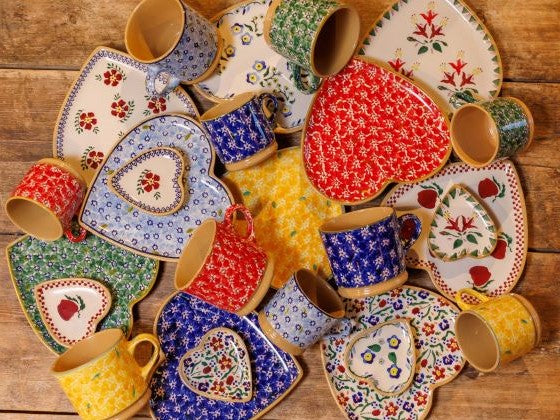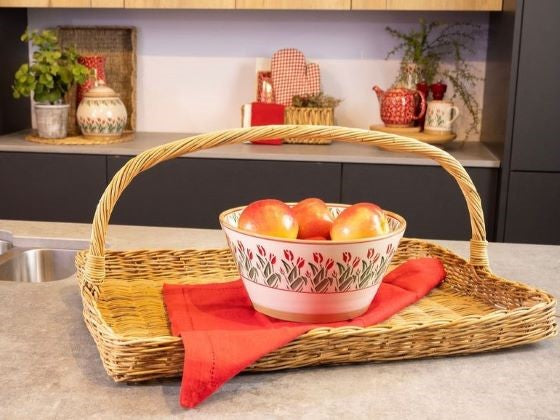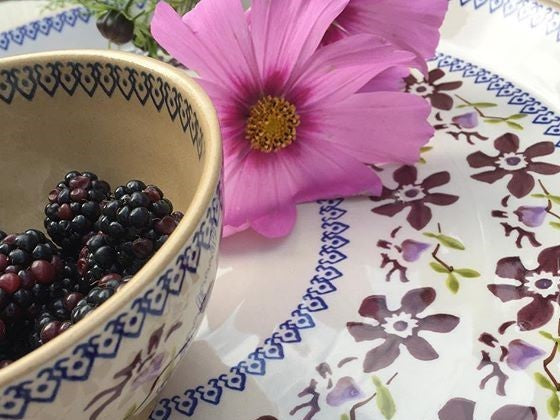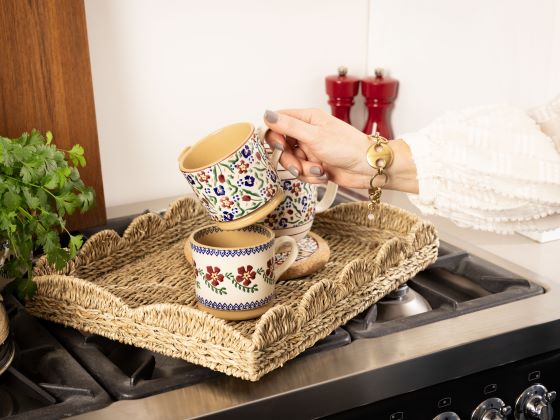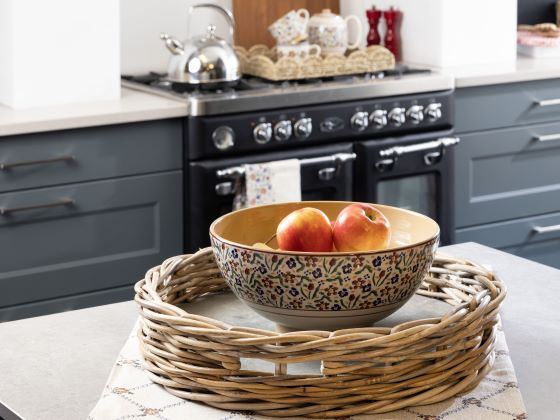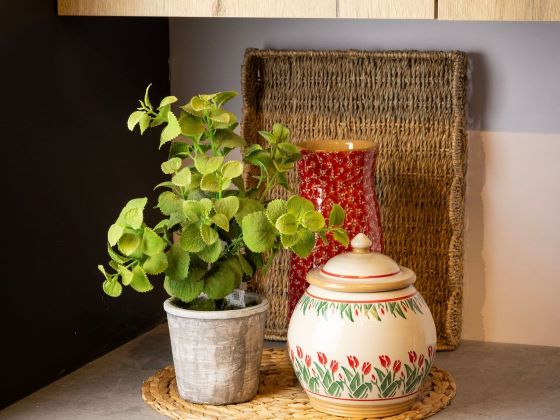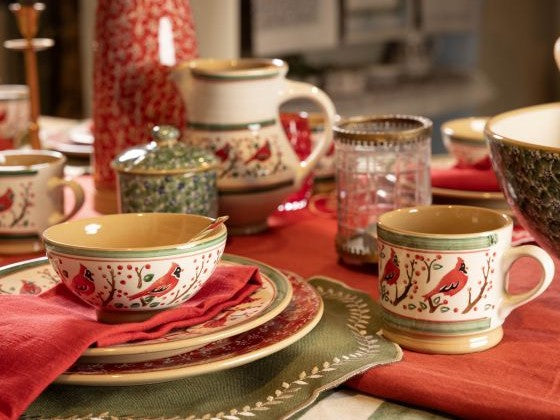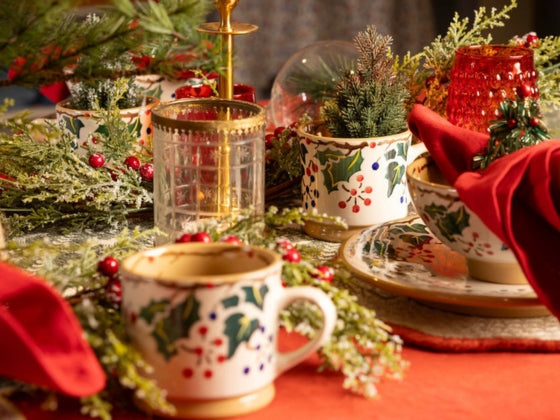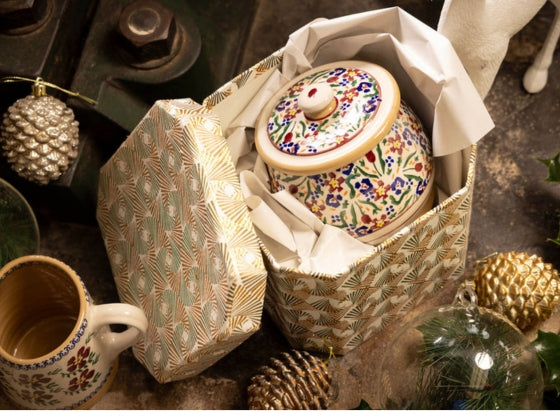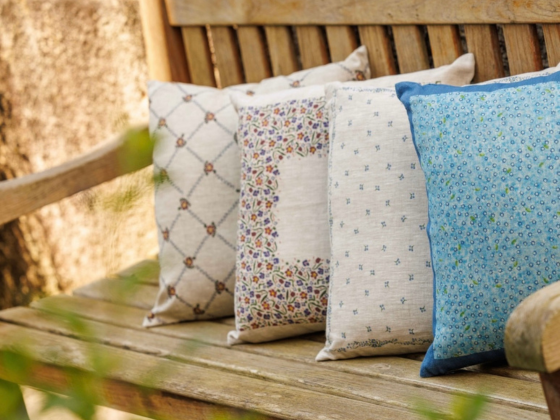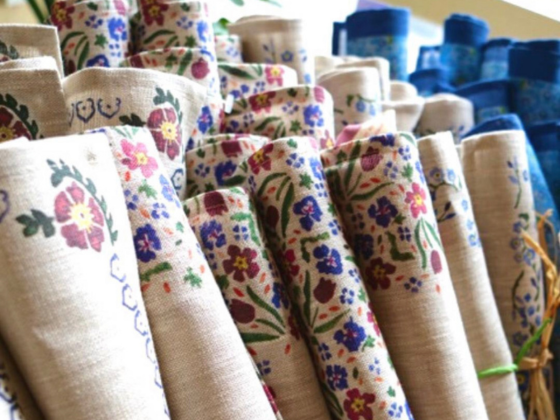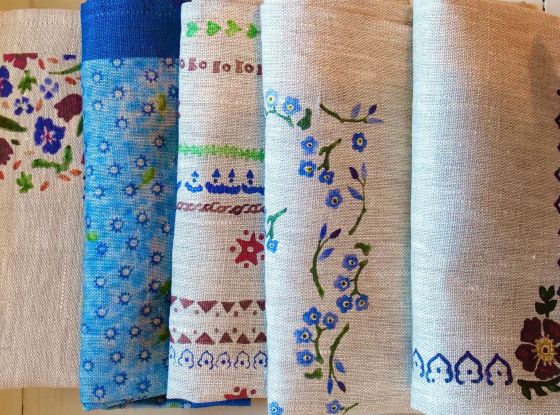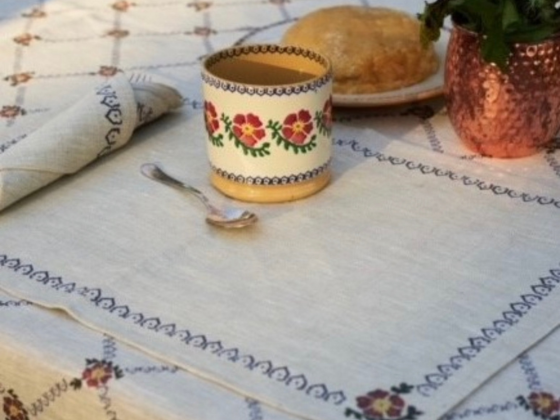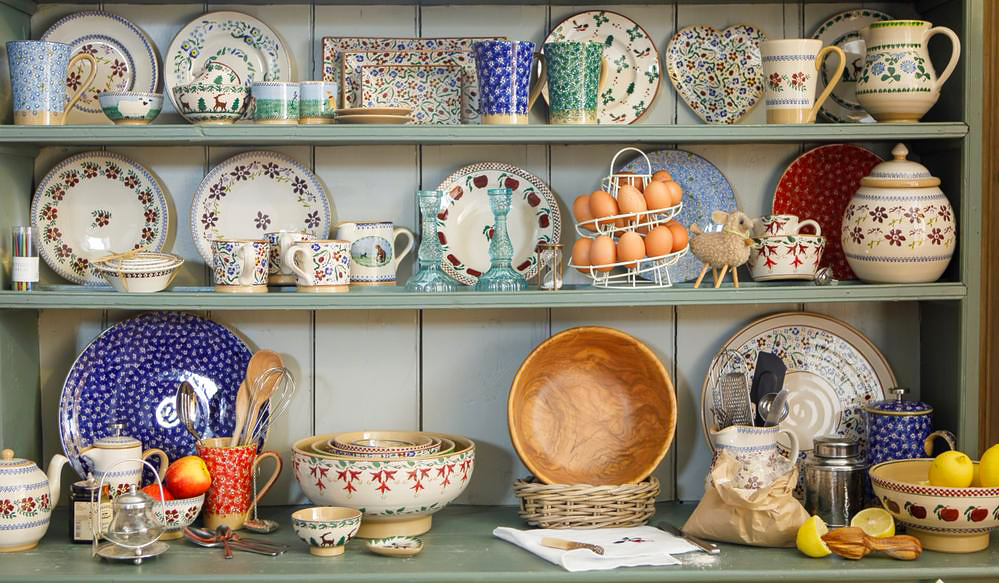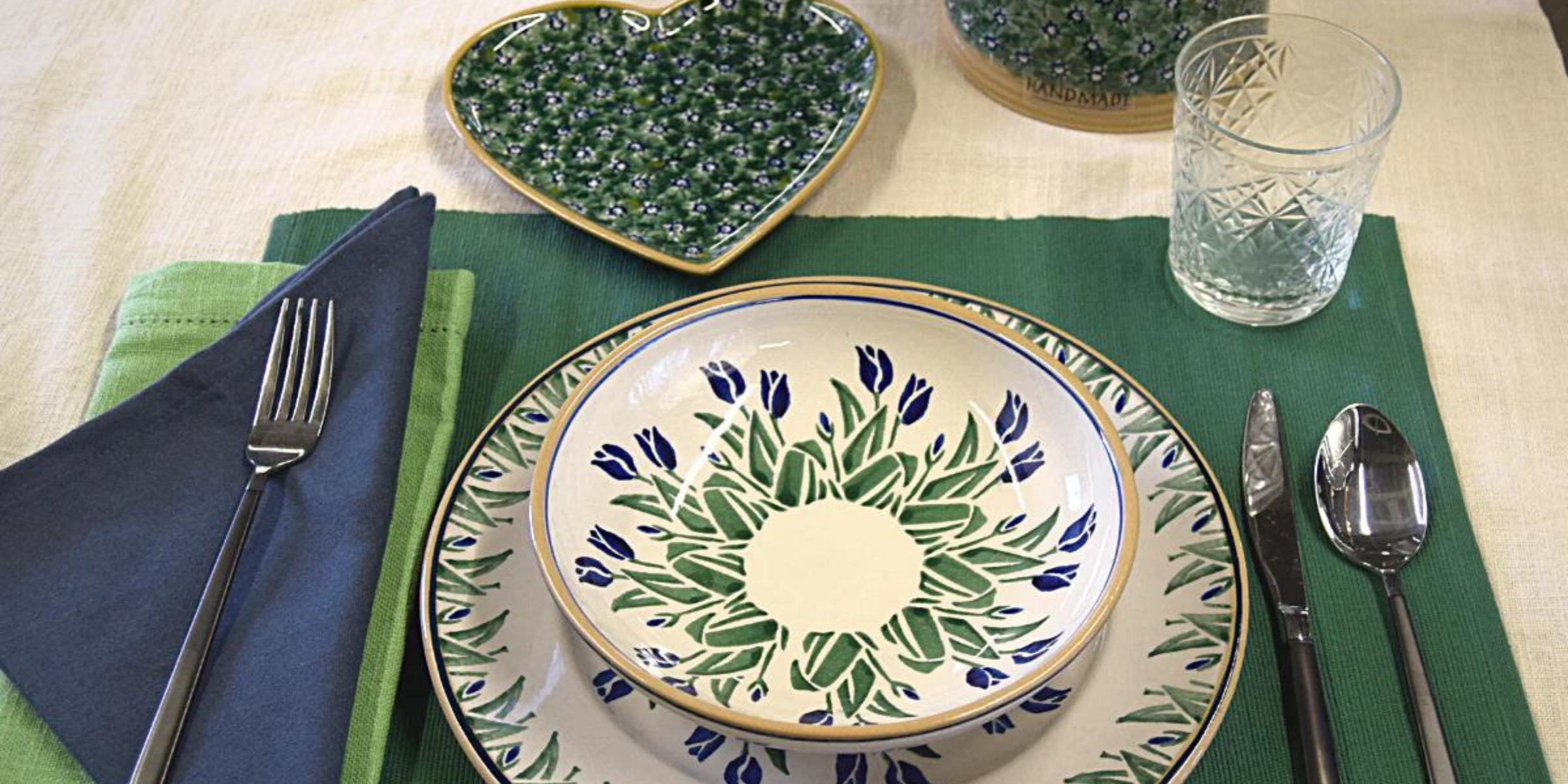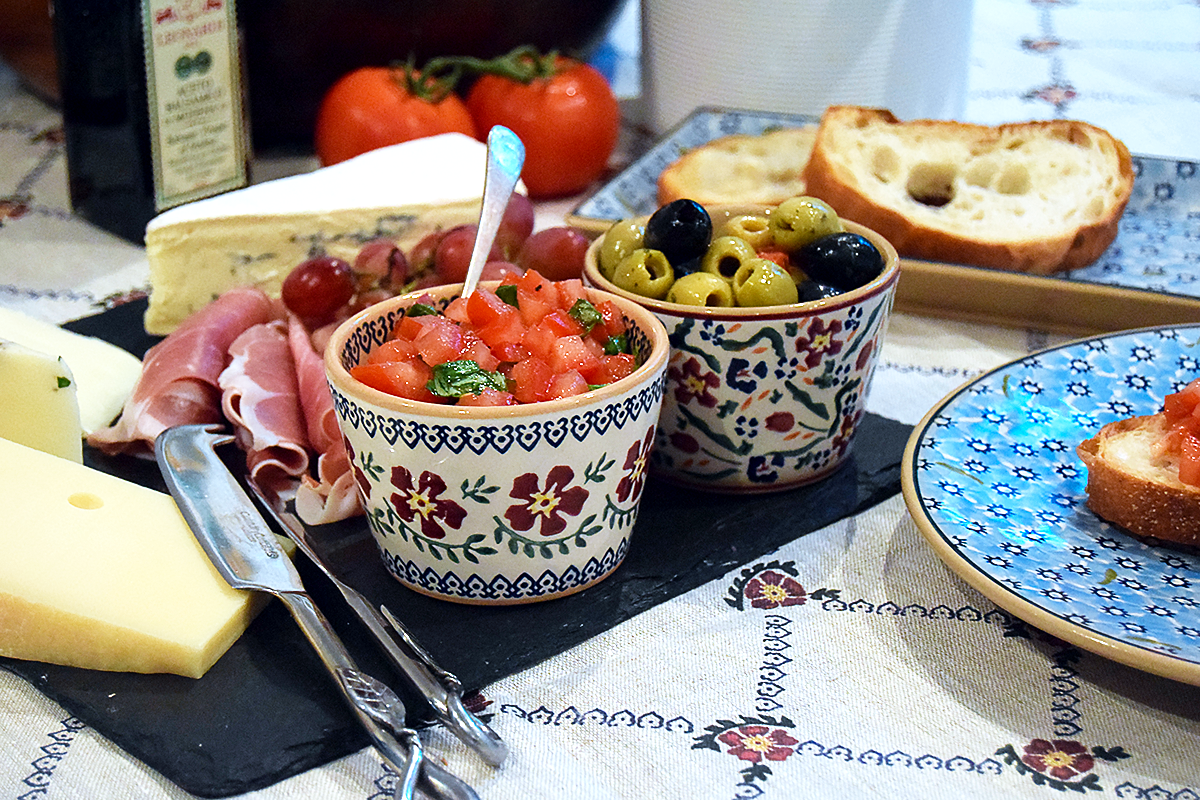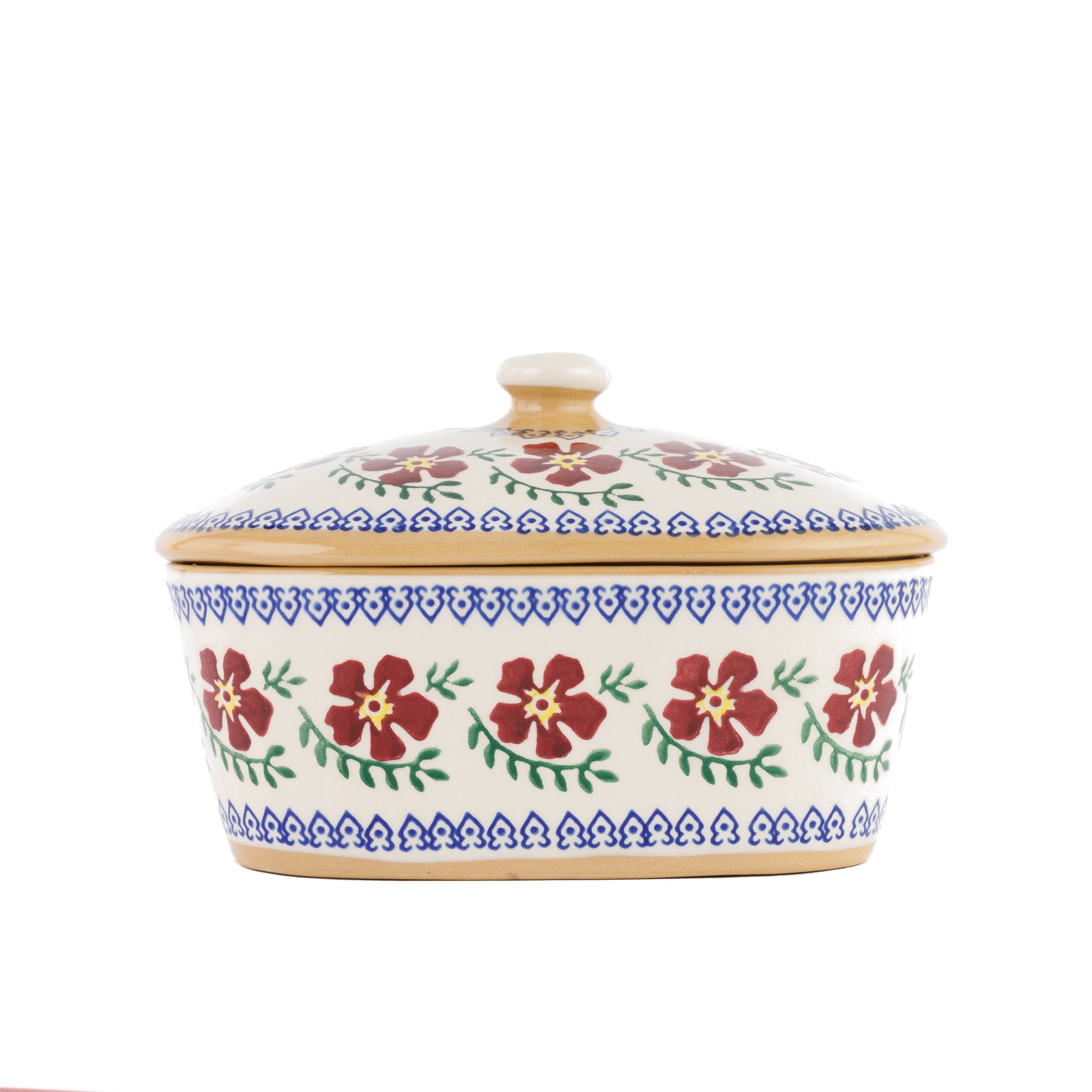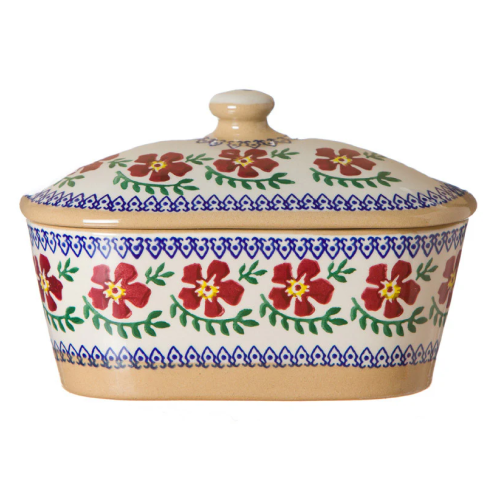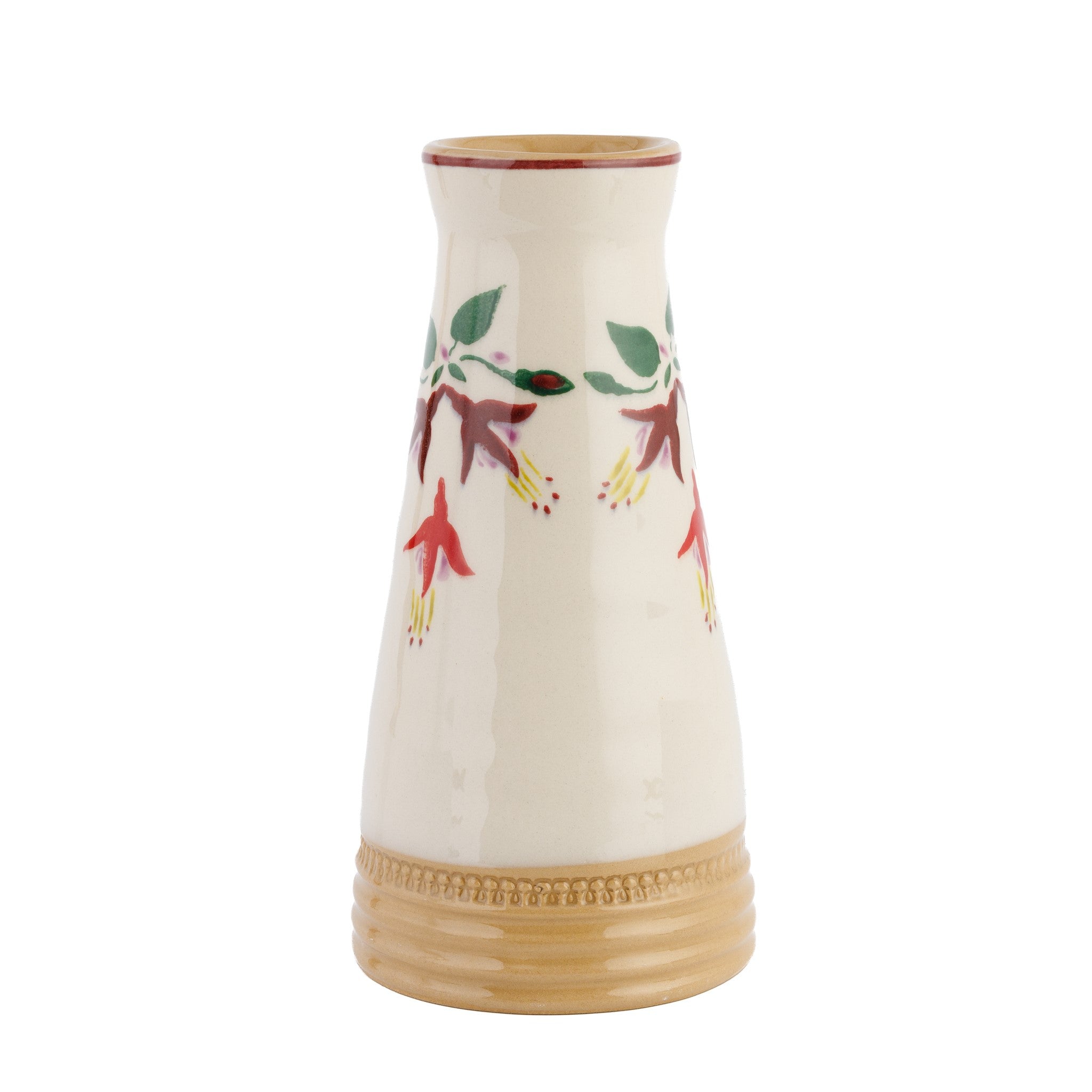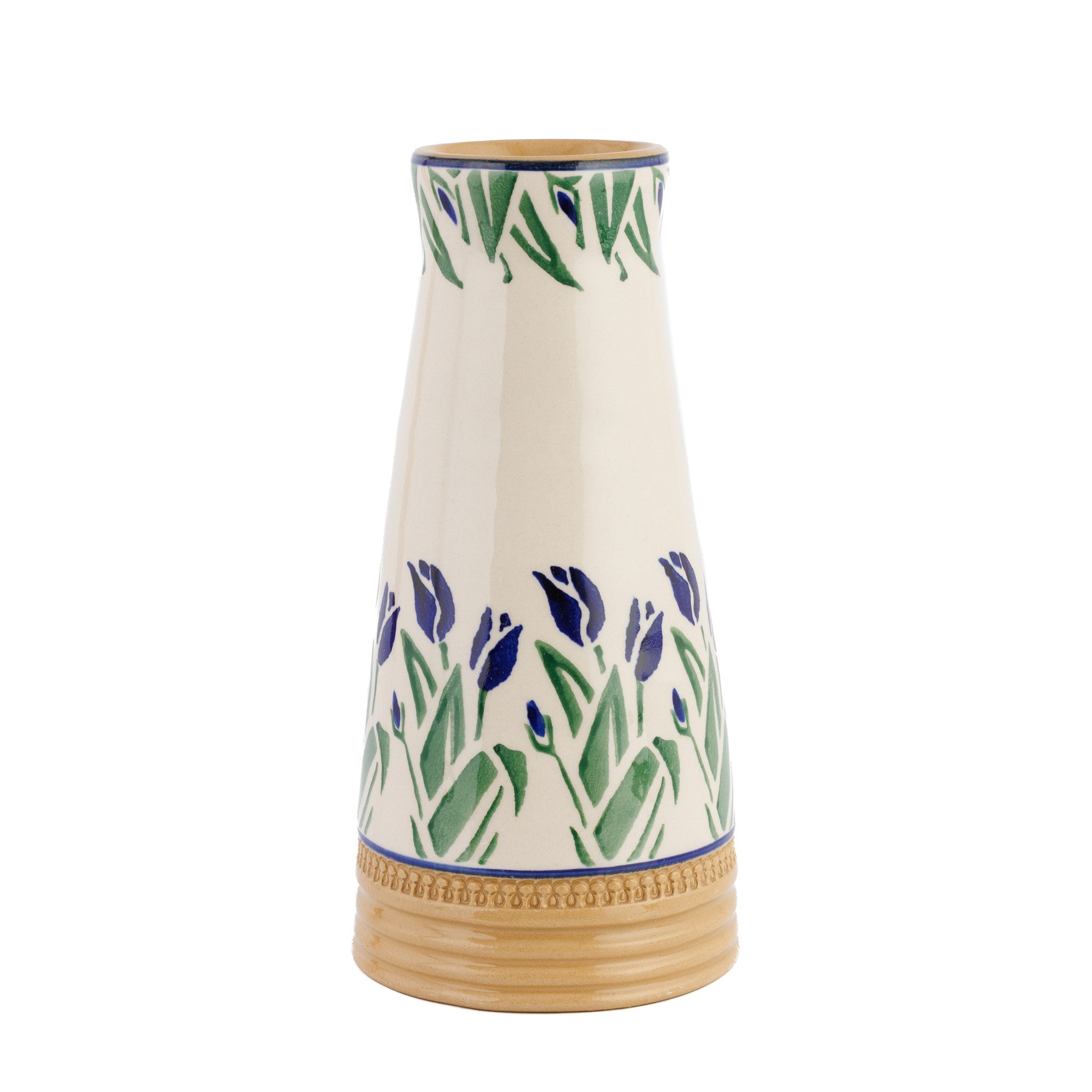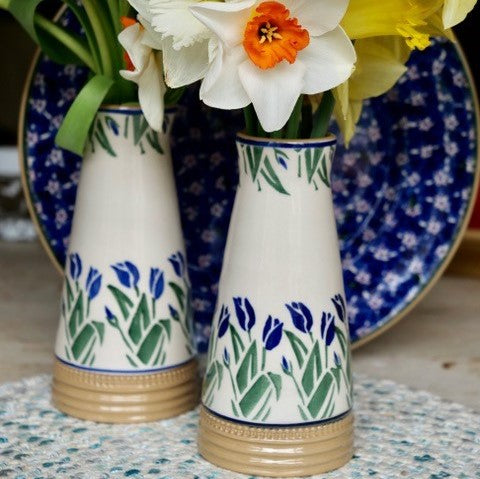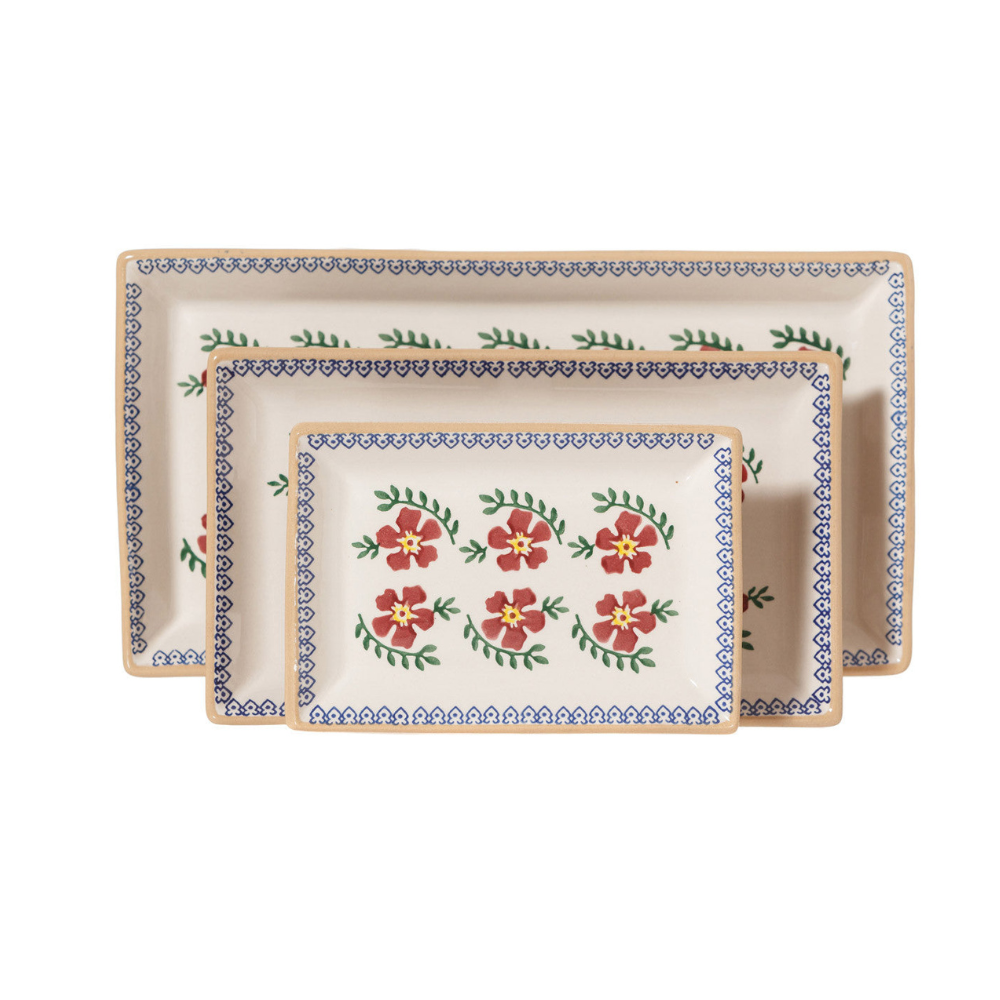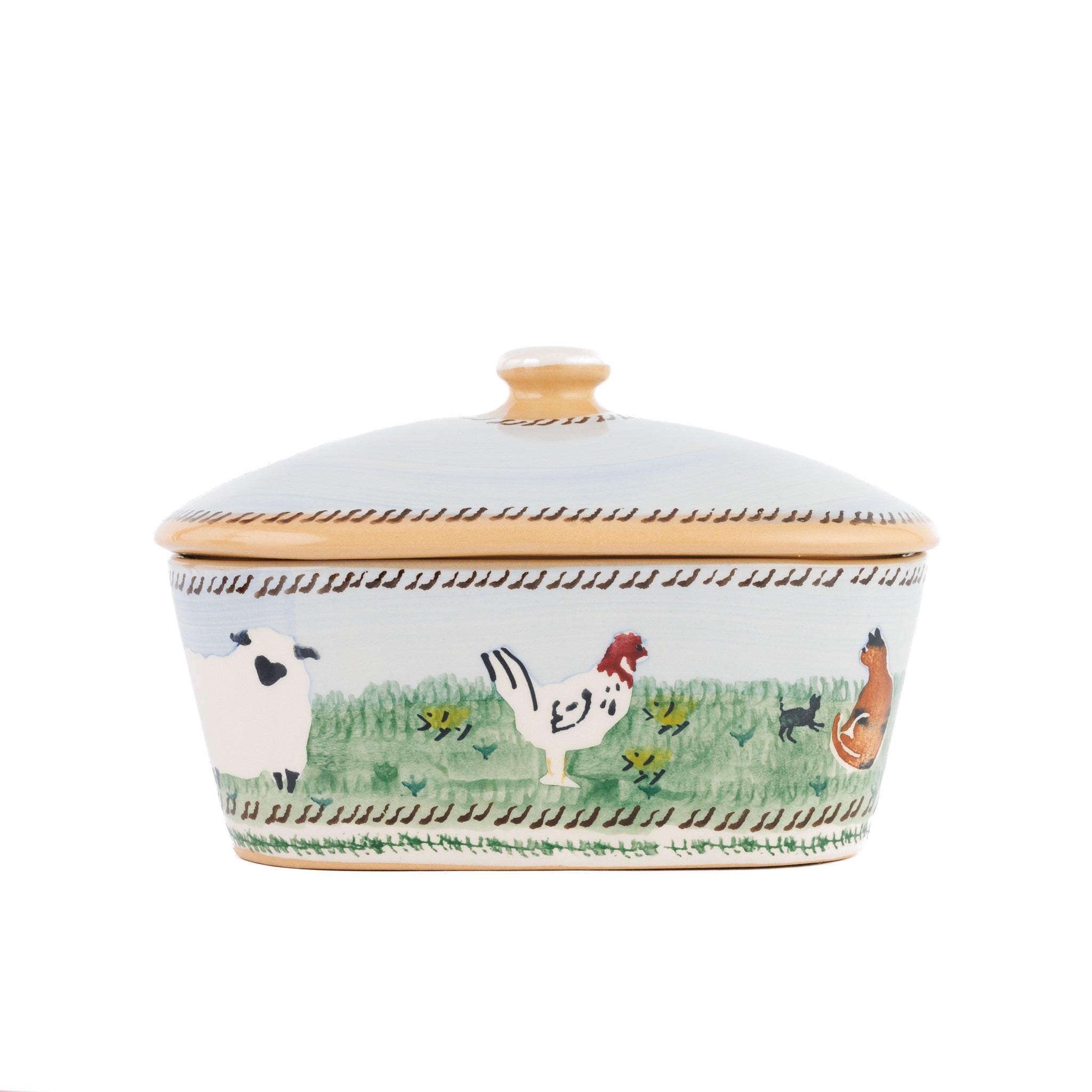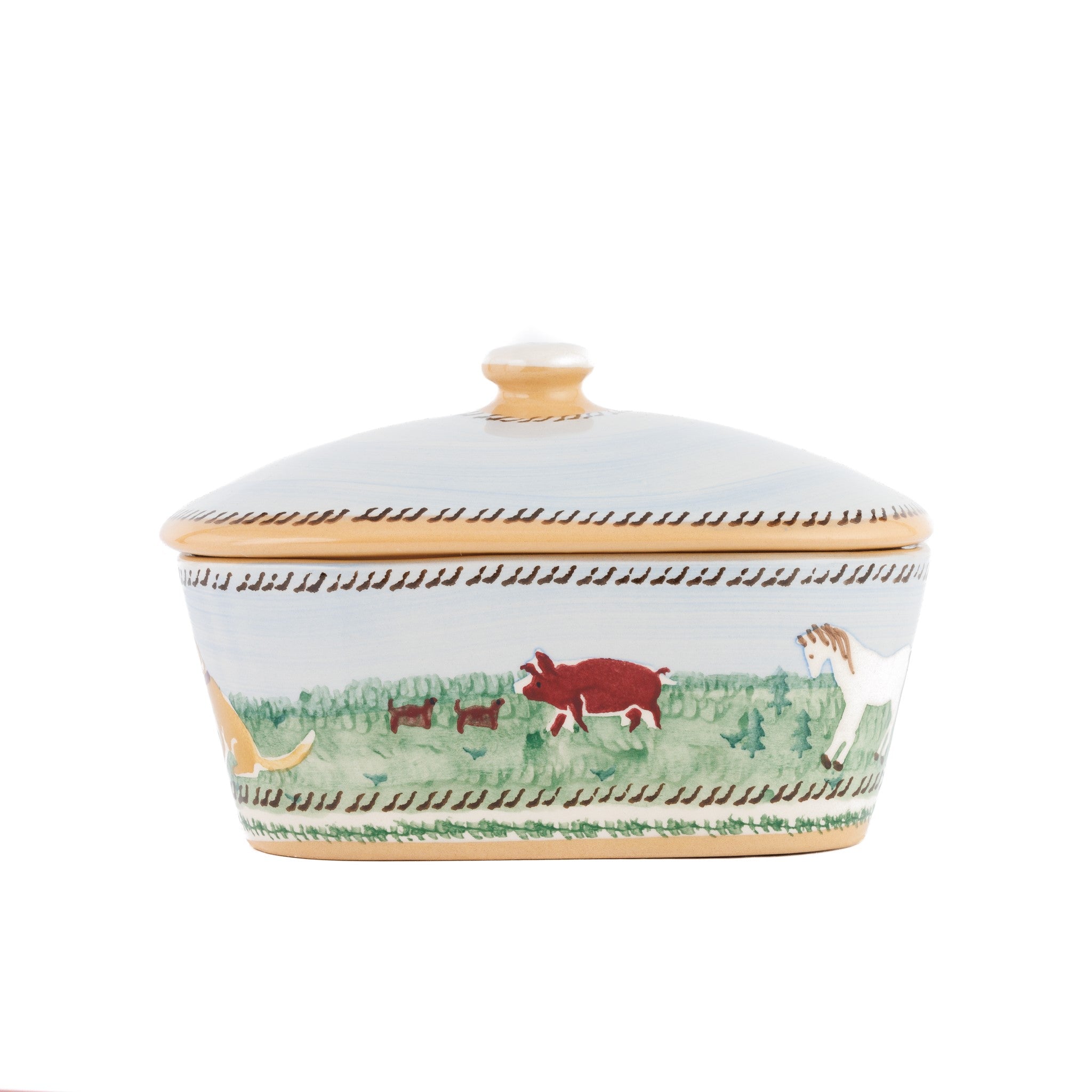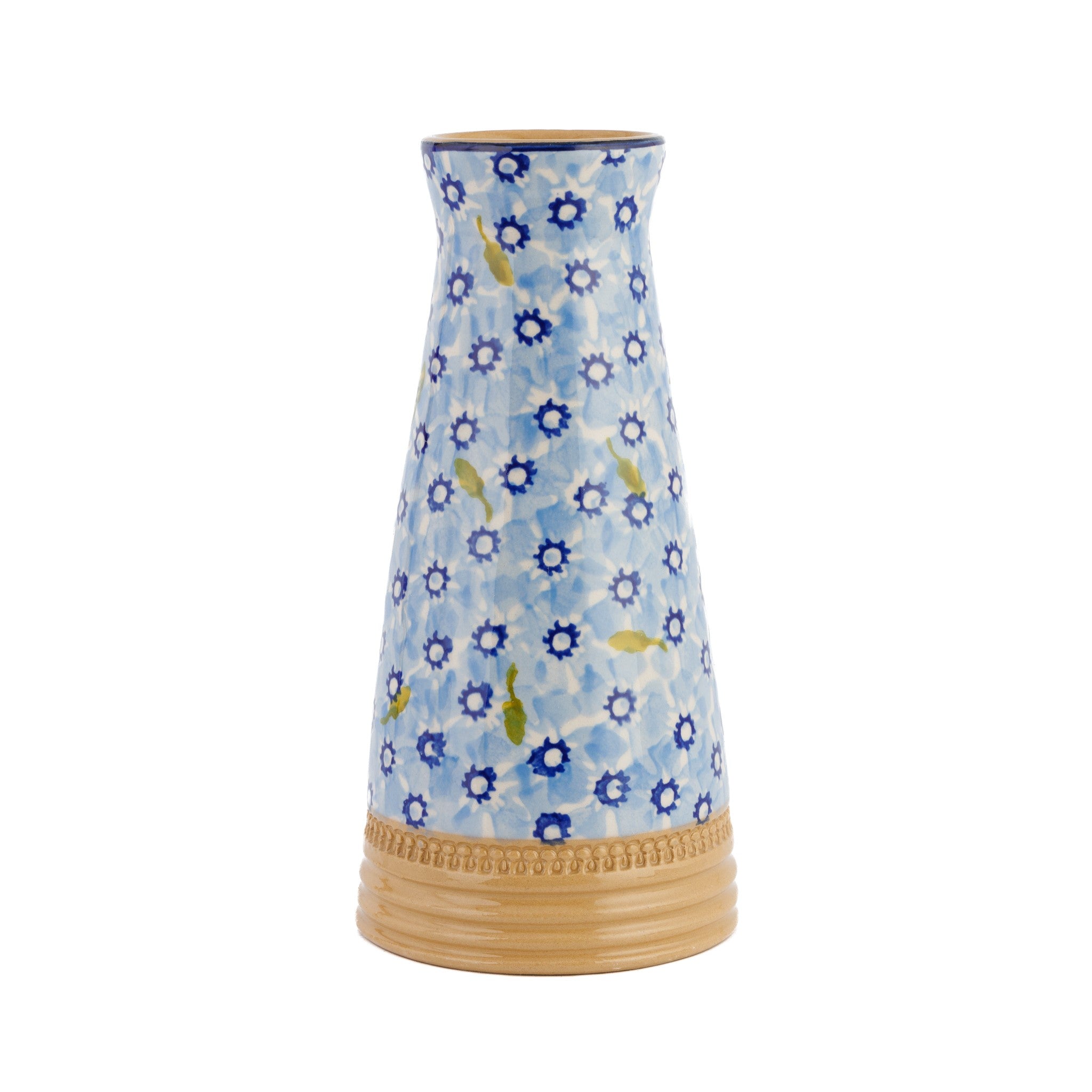How to care for your Nicholas Mosse Pottery
While our Tableware (all our plates, bowls, mugs, jugs and serving dishes) and Kitchenware (‘oven friendly’ oval and rectangular oven, quiche and pie dishes) is made strong and resilient, designed to be used every day and withstand the demands of a modern kitchen; we wanted to share some practical pointers to help you avoid unwanted chips and cracks and to keep your Nicholas Mosse Pottery Collection as good as new. You might already have and use a range of our pottery that you want to keep pristine, or, you may be at the beginning of building your collection, in which case, this is a great chance to start with good habits!
Cleaning
Glazed earthenware is pretty tough stuff on the surface, but it does last longer if treated gently with milder, preferably environmentally friendly detergents. Liquid detergents are less abrasive on the glaze than powder or tablets, but our pottery will tolerate standard cleaners if that is all that’s available. If choosing to hand-wash, use softer, less abrasive natural scouring pads and cloths instead of metal or plastic ones. We like natural sponges made from cellulose that have a scourer side that’s made from loofah, so the whole thing can be composted when it needs to be replaced.
Dishwashing
Everything we make is dishwasher safe. Most damage from a dishwasher comes from items knocking together. So, if you can, carefully stack the dishwasher so no crockery is unstable or touching another piece. Washing at lower temperatures will also prolong the life of your crockery.
Microwaves
All our pottery is microwave safe. However, over time, very regular use in a microwave will gradually weaken the integrity of the pottery, so it’s best to limit this where possible.
- Our ‘oven-friendly’ range of Kitchenware (oval, rectangular, quiche and pie dishes), is made from strong earthenware clay that can handle temperatures up to 225°C/400°F. Only these Kitchenware products are suitable for use in an oven.
- While humans benefit from an icy plunge after a hot sauna, pottery does not like such rapid changes in temperature. Exposing pottery to quick extremes of heat or cold can lead to the appearance of a network of fine, hairline cracks in the glaze. This is known as ‘crazing’ and is often a feature of much older pottery. It shouldn’t affect the longevity of the pottery, and for some, it adds character. However, to reduce the risk of crazing, allow dishes to cool to room temperature before storing in the fridge. Likewise, let dishes that have been kept in the fridge come back up to room temperature before placing in the oven to reheat.
- Our pottery should not be exposed any direct heat like the naked flame on a hob.
Storage
When handled with care ceramics can last many generations. To limit chips, we recommend that you don’t stack mugs inside each other. It’s almost impossible not to stack plates if you don’t have a dresser or wooden rack to keep them in, but if you want to take extra care with your dinner set or oven dishes you can place a paper plate or piece of kitchen paper between each one. This is a useful technique for also protecting pans, to avoid scratching the delicate non-stick coating.
Life after damage
However careful you are, gravity combined with butter-fingers might inevitably get the better of a dish, plate or mug. If a break is clean and you can gather together all the pieces it’s worth trying to stick it back together with strong glue. A reconstructed plate or bowl, or one that’s just chipped but you feel might no longer stand the rigours of a dishwasher, can still be useful in a different role that doesn’t require daily handling or cleaning, like holding fruit, keys, a collection of pretty shells or as a saucer for a house plant. A mug with a broken handle can house toothbrushes or a collection of handy pens. If you have other ideas, do share them with us!
Susan Mosse

